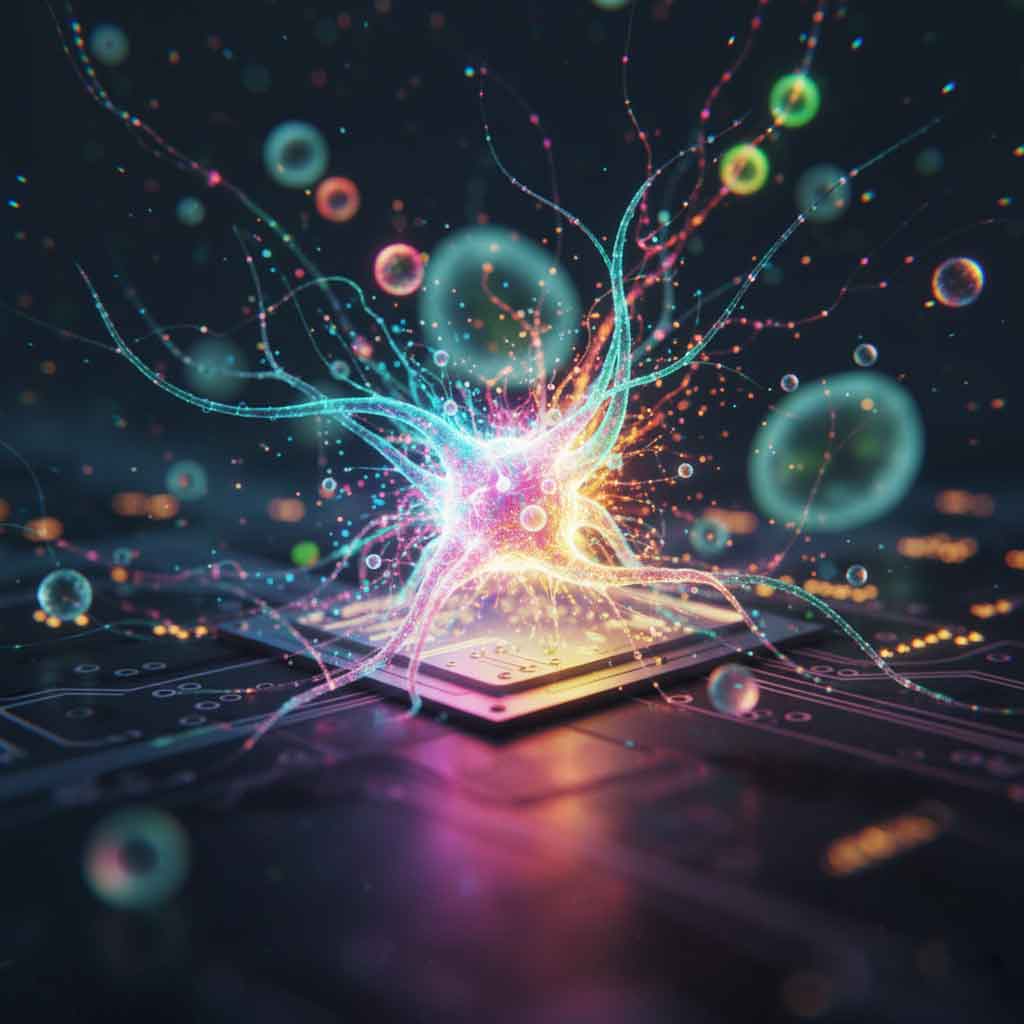The relentless march of AI innovation often feels like it’s happening on a digital plane, far removed from the organic world. But a groundbreaking announcement on October 14, 2025, from engineers at UMass Amherst, has just brought the two closer than ever before. In a stunning scientific achievement, researchers have successfully built an artificial neuron that functions remarkably like its biological counterpart, powered by nothing less than bacterial protein nanowires.
This isn’t just a neat trick; it’s a monumental leap toward a future where AI isn’t just inspired by biology but seamlessly integrated with it.
What Makes This Discovery So Revolutionary?
Think about the complexity and efficiency of your own brain. It operates on incredibly low power, processing vast amounts of information in real-time. Traditional silicon-based AI, while powerful, is still far more energy-intensive and operates on fundamentally different principles than biological neural networks.
The UMass Amherst team has tackled a core challenge: creating a bio-compatible, ultra-low-power artificial neuron.
- Bacterial Protein Nanowires: The key innovation lies in using protein nanowires derived from bacteria. These aren’t just conductive; they mimic the ion-based signaling of biological neurons. This allows the artificial neuron to “fire” and transmit signals using the same fundamental mechanisms as real neurons.
- Extremely Low Voltage: Perhaps the most astounding aspect is its power efficiency. These artificial neurons operate at extremely low voltages – orders of magnitude less than traditional electronics. This makes them perfectly suited for integration within biological systems without causing damage or requiring bulky power sources.
- Bio-Compatibility: Because they are made from biological materials, these neurons are inherently more bio-compatible. This significantly reduces the challenges of integrating them with living tissue, paving the way for applications that were once the stuff of science fiction.
The Future is Hybrid: Implications for AI and Beyond
The potential applications of this technology are staggering and open up entirely new avenues for both scientific research and commercial ventures:
- Brain-Computer Interfaces (BCIs) 2.0: Imagine BCIs that are more seamlessly integrated, less invasive, and capable of more nuanced communication with the brain. This could revolutionize prosthetics, neurological disorder treatments, and human-computer interaction.
- Ultra-Efficient Neuromorphic Computing: This research brings us closer to neuromorphic chips that don’t just mimic the architecture of the brain but also its fundamental operational principles and extreme power efficiency. This could lead to AI hardware that is exponentially more powerful and sustainable.
- Smart Bio-Sensors and Medical Devices: Bio-compatible AI components could lead to advanced medical implants that can monitor conditions, deliver targeted therapies, or even enhance bodily functions with unprecedented precision and without the need for external power.
- AI for Environmental Monitoring: Low-power, bio-inspired sensors could be deployed in natural environments to gather data without disrupting ecosystems, potentially leading to breakthroughs in climate science and biodiversity monitoring.
- Understanding the Brain: By building and observing these biologically inspired artificial neurons, scientists gain invaluable insights into how our own brains work, accelerating research into consciousness, memory, and neurological diseases.
This breakthrough at UMass Amherst isn’t just another step; it’s a giant leap towards blurring the lines between the biological and the artificial. For PowerTechAI, this signals a future where AI isn’t confined to data centers but becomes an integral, living part of our world, offering unprecedented opportunities for innovation, health, and understanding.
The era of bio-integrated AI is dawning, and it promises to be nothing short of revolutionary.


